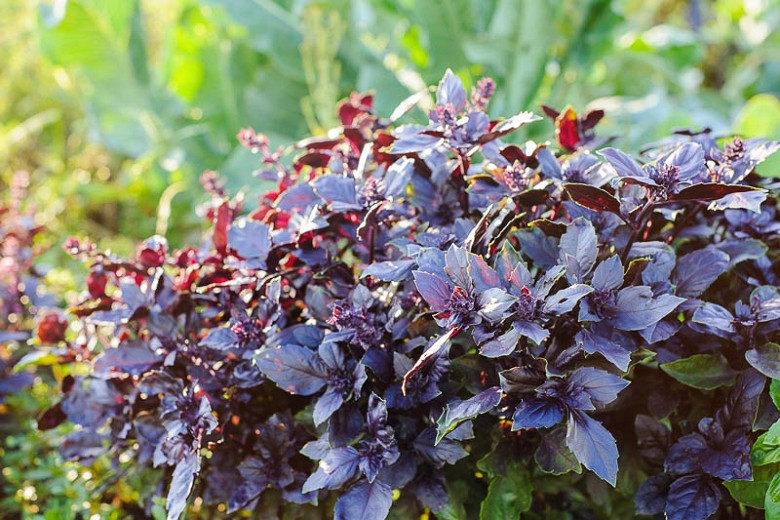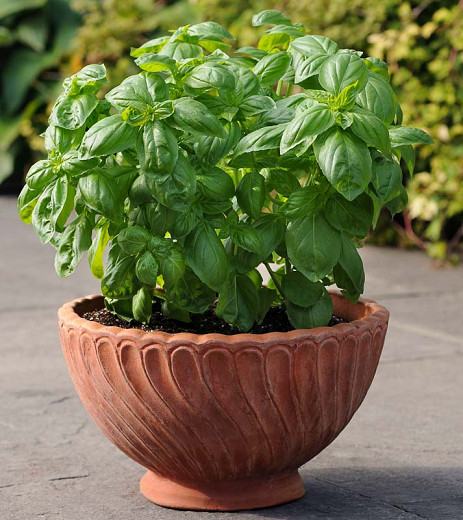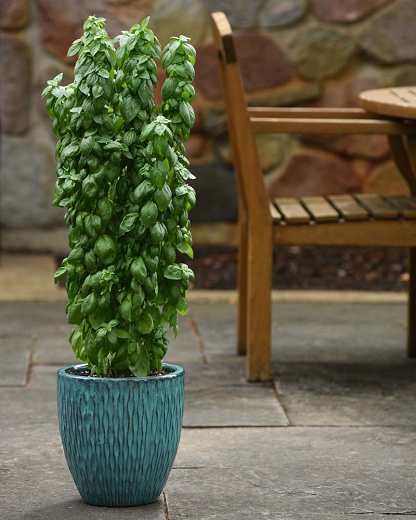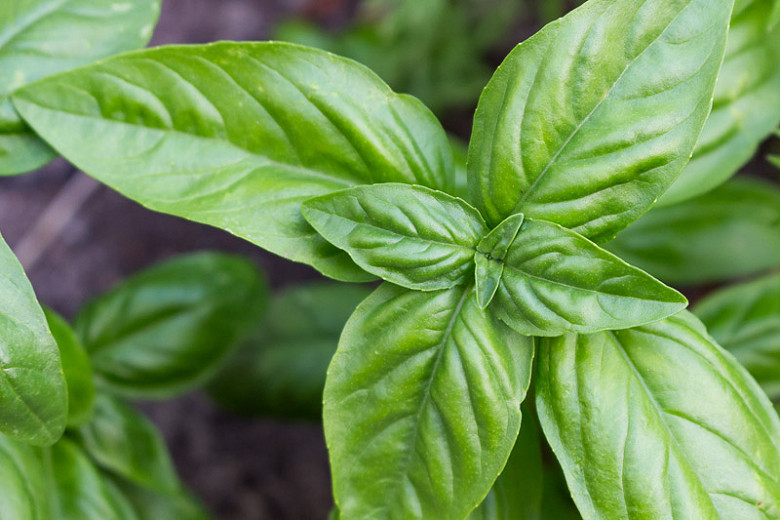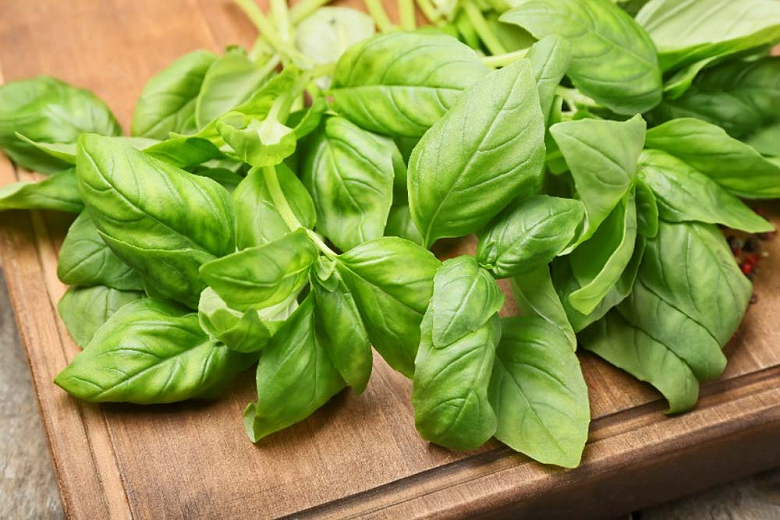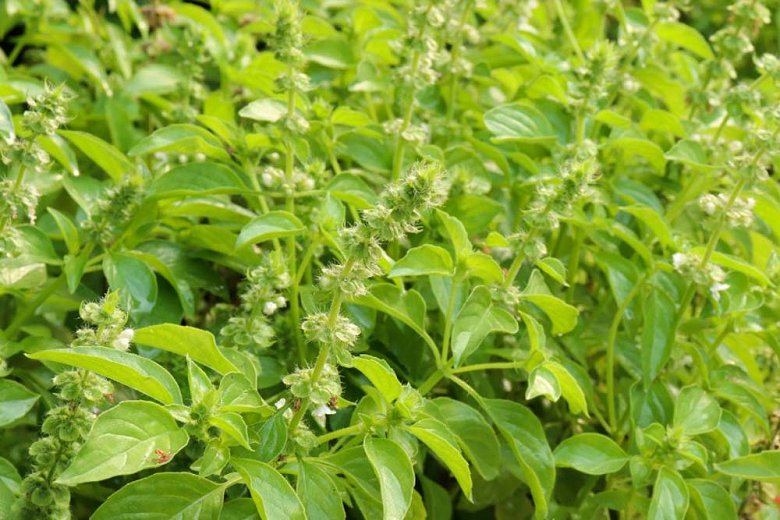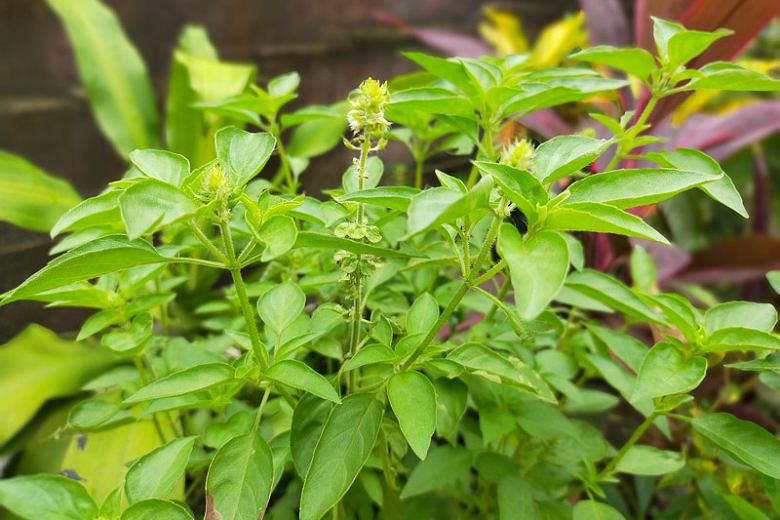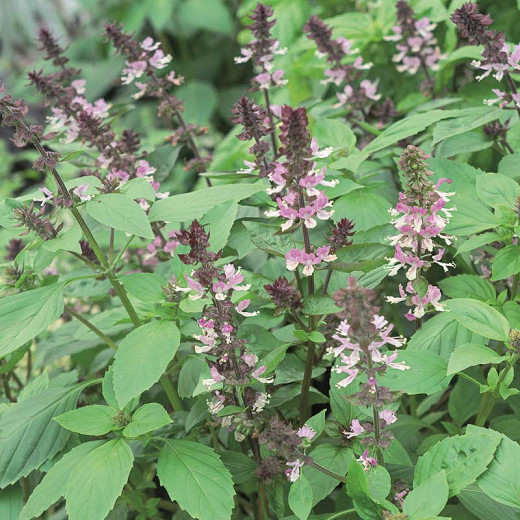Ocimum basilicum var. minimum Greek (Greek Basil)
Ocimum basilicum var. minimum ‘Greek’ (Greek Basil) is a compact, bushy annual with highly aromatic, bright green leaves. The leaves are smaller than those of sweet basil, with a slightly sweeter flavor. In summer, spikes of small, tubular pink or white flowers appear at the top of the stems. Greek Basil is used in both cooking and as a decorative plant that adds lush greenery to any space.
Ocimum basilicum var. minimum 'Greek' (Greek Basil) is a compact, bushy annual with highly aromatic, bright green leaves. The leaves are smaller than those of sweet basil, with a slightly sweeter flavor. In summer, spikes of small, tubular pink or white flowers appear at the top of the stems. Greek Basil is used in both cooking and as a decorative plant that adds lush greenery to any space. The leaves can be used to make pesto or added to tomato sauces or pizzas.
- Grows up to 8-12 in. tall and wide (20-30 cm).
- Performs best in light, well-drained, fertile soil in a sheltered position in full sun. Water freely in summer. Basil is extremely frost sensitive.
- Harvest mature leaves for fresh use at any time.
- Although Basil naturally repels mosquitoes and flies, it attracts bees, butterflies, and other beneficial insects to the garden.
- Basil is a valuable addition to the vegetable garden and an excellent companion plant for tomatoes, peppers, parsley, lettuce, asparagus, beans, beets, cabbage, eggplant, marigolds, potatoes, or oregano. Avoid planting Basil near Rue (Ruta graveolens) and Sage (Salvia officinalis).
- While Basil makes a colorful and flavorful addition to many dishes, it can also provide some health benefits. Basil contains many vitamins and minerals, as well as antioxidants and essential oils. However, all these great compounds disappear during the process of drying, so opt for fresh basil whenever possible to enjoy the most benefits. Basil can help reduce inflammation in the body, lower blood pressure, fight free radicals, and reduce high blood sugar levels. Basil has antibacterial properties.
- No serious pest or disease issues. Keep an eye out for slugs, snails, and powdery mildews. Deer and rabbit resistant.
- Pinch out flowerheads as they appear to ensure continued leaf growth. Cut back after flowering.
- Propagate by seed in gentle heat in spring under glass or indoors.
Requirements
| Hardiness | 2 – 11 |
|---|---|
| Climate Zones | 1, 1A, 1B, 2, 2A, 3, 3A, 3B, 4, 5, 6, 7, 8, 9, 10, 11, 12, 13, 14, 15, 16, 17, 18, 19, 20, 21, 22, 23, 24, A1, A2, A3 |
| Plant Type | Annuals, Herbs, Perennials |
| Plant Family | Ocimum – Basil |
| Exposure | Full Sun |
| Season of Interest | Spring (Late)Summer (Early,Mid,Late)Fall |
| Height | 8" – 1' (20cm – 30cm) |
| Spread | 8" – 1' (20cm – 30cm) |
| Spacing | 12″ (30cm) |
| Water Needs | Average |
| Maintenance | Low |
| Soil Type | Loam, Sand |
| Soil pH | Acid, Alkaline, Neutral |
| Soil Drainage | Well-Drained |
| Characteristics | Fragrant |
| Tolerance | Deer, Rabbit |
| Attracts | Bees, Butterflies |
| Garden Uses | Beds and Borders, Patio and Containers |
| Garden Styles | Informal and Cottage |

